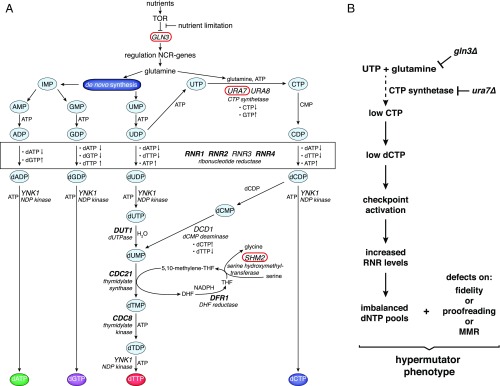Fig. 5.
(A) Pathways of de novo dNTP biosynthesis in S. cerevisiae (adapted from ref. 9). Essential genes are shown in bold (RNR1, 2, and 4 are nonessential in certain yeast genetic backgrounds). Metabolism-related genes (GLN3, URA7, and SHM2) identified in this screen were encircled in red. (B) Gln3 and Ura7 promote DNA replication fidelity by preventing dNTP pool imbalances. Inactivation of Gln3 or Ura7 results in low CTP/dCTP levels, triggering DNA damage checkpoint activation. Up-regulation of RNR subunits, instead of compensating low dCTP pools, creates a severe dNTP pool imbalance that, in combination with altered DNA polymerase functions or partial MMR defects, causes severe mutator phenotypes.

